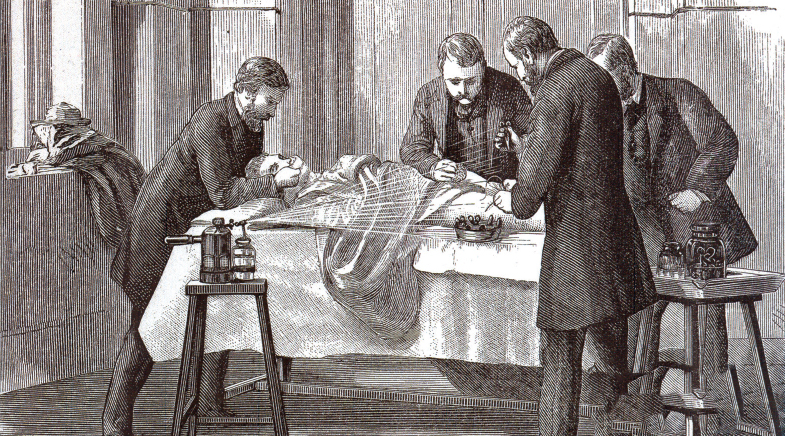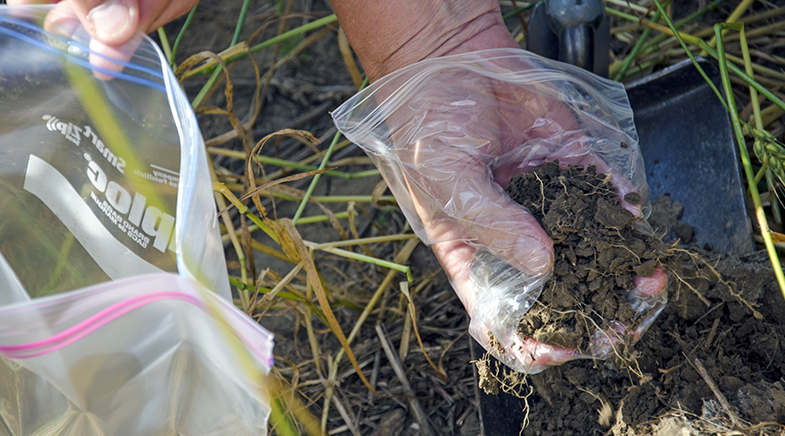Safety first, on the surgeon's table
-
- from Shaastra :: vol 04 issue 04 :: May 2025

Joseph Lister's use of an antiseptic spray dramatically reduced deaths during surgeries.
On September 4, 1871, English surgeon Joseph Lister was hurriedly summoned to Balmoral Castle in Scotland to attend to the most important patient of his career: Queen Victoria. The monarch had developed a painful, pus-filled lump in her armpit. When no treatment worked, her physician, William Jenner, suggested consulting Lister, who was at The University of Edinburgh and the nearest surgeon available.

Lister (pictured) looked at the lump and decided to cut it out. But, first, he brought in a pump-like machine that he and Jenner used to spray a chemical called carbolic acid all over the room. Lister had discovered that doing this could prevent open wounds from festering. The queen, already nervous, was not amused when they accidentally sprayed the acid into her face. But when Lister successfully removed the lump and covered the wound with dressings dipped in carbolic acid to prevent further infection — thereby saving her life — she was impressed. Lister later joked that he was the only person to stab the queen and get away with it (bit.ly/queen-armpit). The queen's appreciation came at a crucial time. Lister had been struggling to convince his peers to take disinfection seriously.
IN CONFLICT
Among Lister's fiercest critics was James Simpson, who discovered the use of chloroform for anaesthesia. Simpson already had a long-standing clash with Lister's mentor and father-in-law, James Syme.

He wrote several scathing articles questioning the novelty of Lister's methods while highlighting his own idea of using acupressure to reduce wound infection. Lister rebutted this, saying he never claimed to be the first to use carbolic acid — and prevailed when his antiseptic methods became widely accepted.
Back then, surgeries were like horror shows: people would queue up to watch doctors dressed in blood-drenched aprons perform operations. Surgeons didn't sterilise their hands or medical equipment. Speed was considered more important than hygiene. Patients died just as frequently on the operating table as on the battlefield.
After studying medicine at University College London, Lister worked at the Glasgow Royal Infirmary, overseeing a male accident ward. The hospital abutted an open burial pit and once housed coffins of dead cholera patients in its basement. Lister kept losing patients to sepsis and had to frequently amputate limbs.
FATAL INFECTION
Lister's advice was ignored even by surgeons across the Atlantic, with tragic results. He visited the U.S., giving talks and imploring surgeons to use antiseptics, but no one took him seriously. In 1881, when U.S. President James A.
PHOTO: WIKIPEDIA

Garfield (pictured) was shot by an assassin, doctors poked and prodded him with unsterilised hands and instruments. He caught an infection and died (bit.ly/Garfield-shot). If they had listened to Lister, the President may have survived.
The surgeon then heard of Louis Pasteur's germ theory, which suggested that invisible bugs caused illnesses. He started hunting for chemicals to kill these bugs before they entered the wound. He zeroed in on carbolic acid, a smelly, tar-like substance used to treat sewage.
Initially, Lister applied raw carbolic acid directly to wounds. The first patient on whom he tested it did not survive. But most of his later patients did, including an 11-year-old boy run over by a cart, and a 10-year-old whose arm was crushed in a factory machine. Lister would wash patients' wounds and cover them with dressings dipped in carbolic acid, which saved both limbs and lives. He advised his staff to sterilise their hands and equipment using a 5% carbolic acid solution. In three years, the death rate in his ward fell from 46% to 15% (bit.ly/death-rates).
Lister's peers didn't immediately accept his ideas. In 1877, he publicly carried out a complex surgery to fix a broken kneecap using silver wire sterilised with carbolic acid. The patient survived against expectations, cementing Lister's reputation. The surgeon later discontinued using carbolic acid as it was harsh on human tissue. But his revolutionary idea of using antiseptics still lies at the heart of modern surgery. Listerine, the popular mouthwash brand, was named after him.
Ranjini Raghunath is a Bengaluru-based science writer and editor.
Have a
story idea?
Tell us.
Do you have a recent research paper or an idea for a science/technology-themed article that you'd like to tell us about?
GET IN TOUCH














